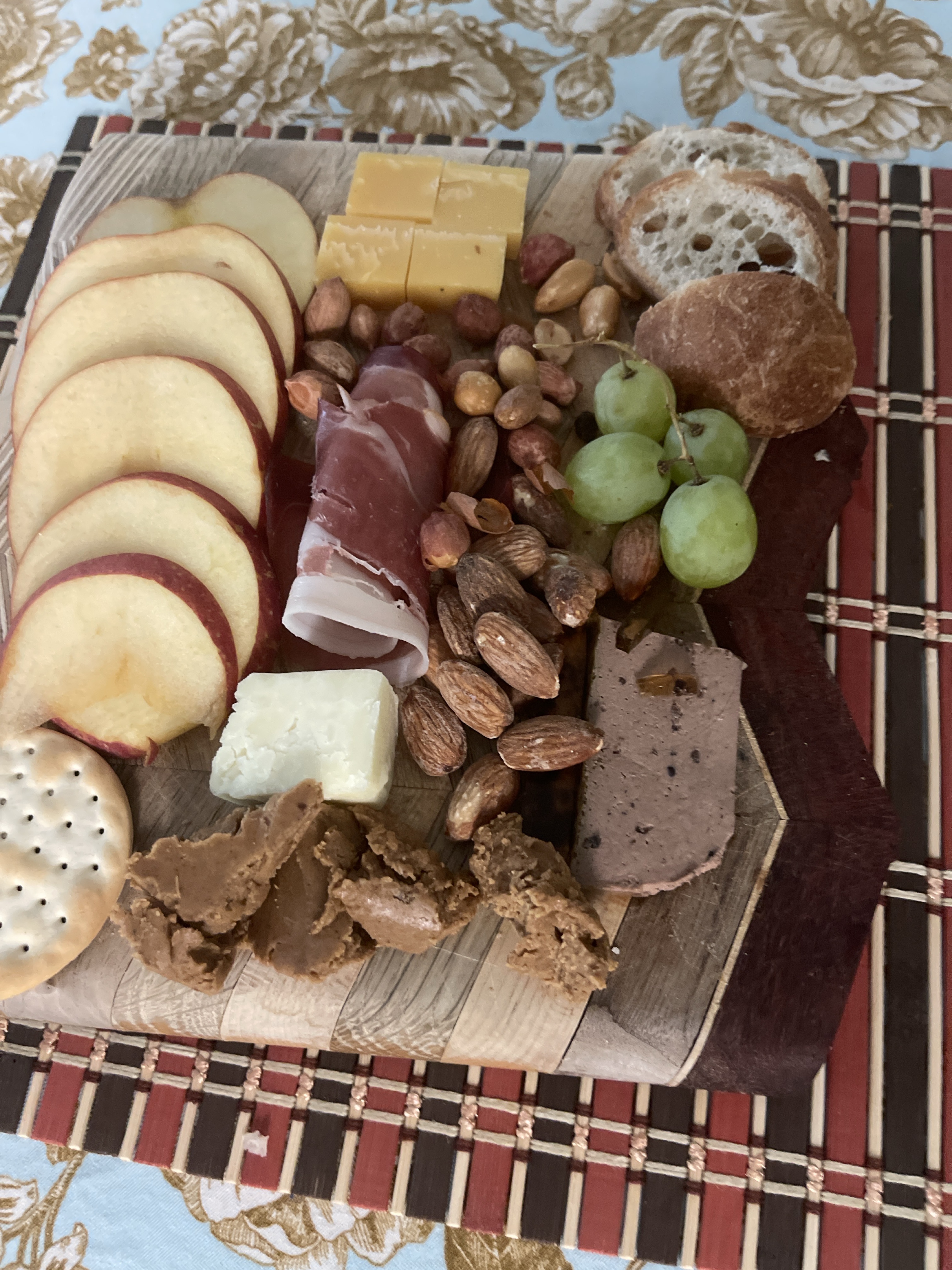#
+ Expand
Analysis
In designing the scenery and costumes...
Item |
Est. Calories |
|---|---|
Apple slices |
50 kcal |
Crackers (2) |
30 kcal |
Cheese (~1 oz) |
110 kcal |
Prosciutto (1 slice) |
50 kcal |
Mixed nuts (~1 tbsp) |
100 kcal |
Grapes (5 small) |
20 kcal |
Pâté slice |
90 kcal |
Bread (2 pieces) |
80 kcal |
Peanut butter (~2 tbsp) |
190 kcal |
Honey (1 tbsp) |
64 kcal |
Total |
784 kcal |
Pro tip:
If you drizzle that honey over the cheese and peanut butter, you’re basically eating dessert in disguise.


Fig. 7 Just one tablespoon of honey = ~64 kcal (Mostly from sugars: glucose + fructose) Now we’re gilding the lily—adding a tablespoon of honey brings this board into luxurious snack territory.#
Want to really lean in and add a pinch of sea salt or some chili flakes? You’d unlock a whole new flavor tier.
Total: ~720 kcal. And if you’re counting:
Protein: Good from cheese, nuts, meat, and PB.
Fat: High, but high-quality (PB, cheese, nuts).
Sugar: Mainly from fruit.
Refined carbs: Mostly just the bread and crackers.
If you’re sharing this with one other person, it’s a solid ~360 kcal snack per head. If it’s just for you? Worth every bite. Want me to convert this into a macro breakdown or rank it by satiety bang-for-buck?

